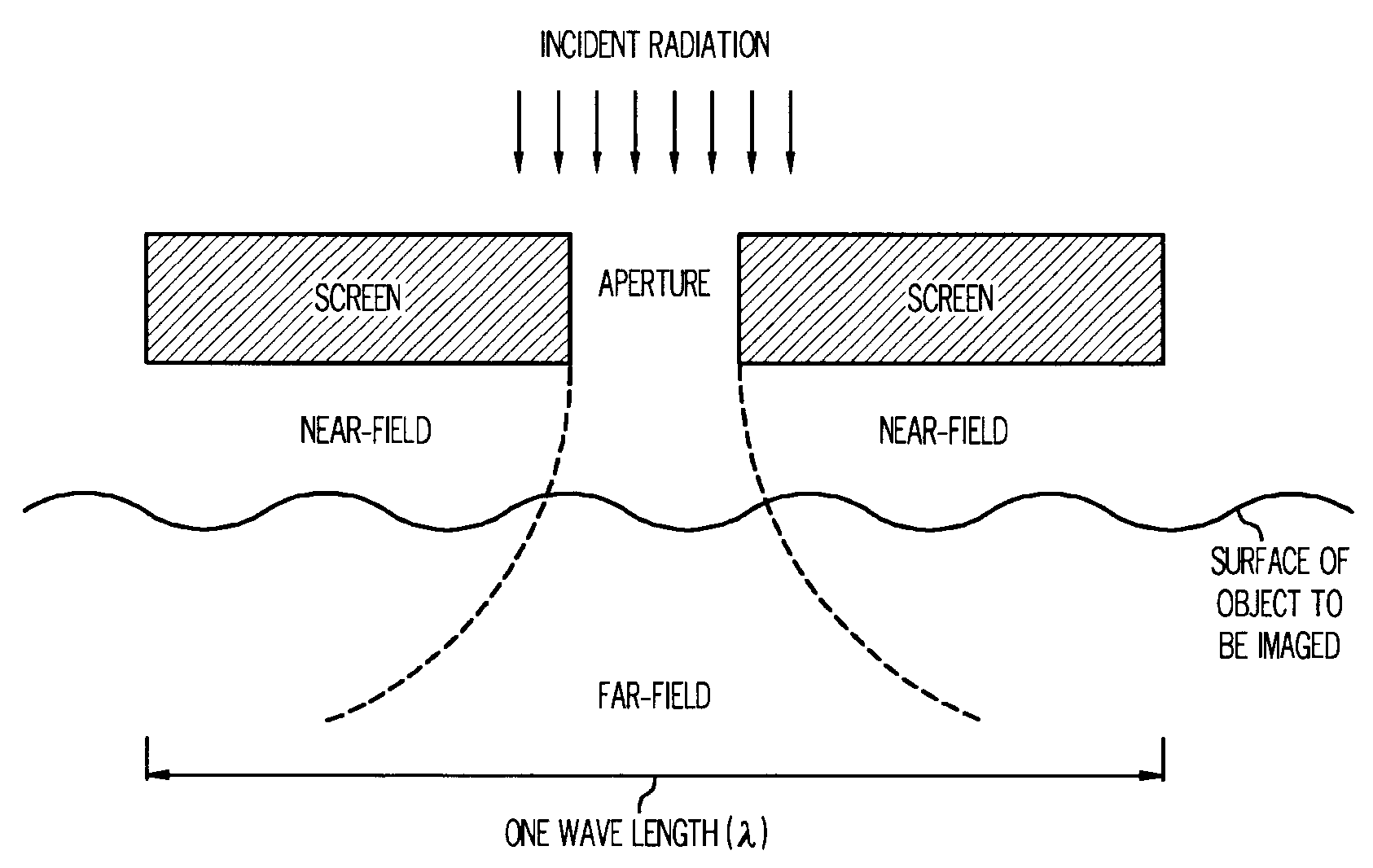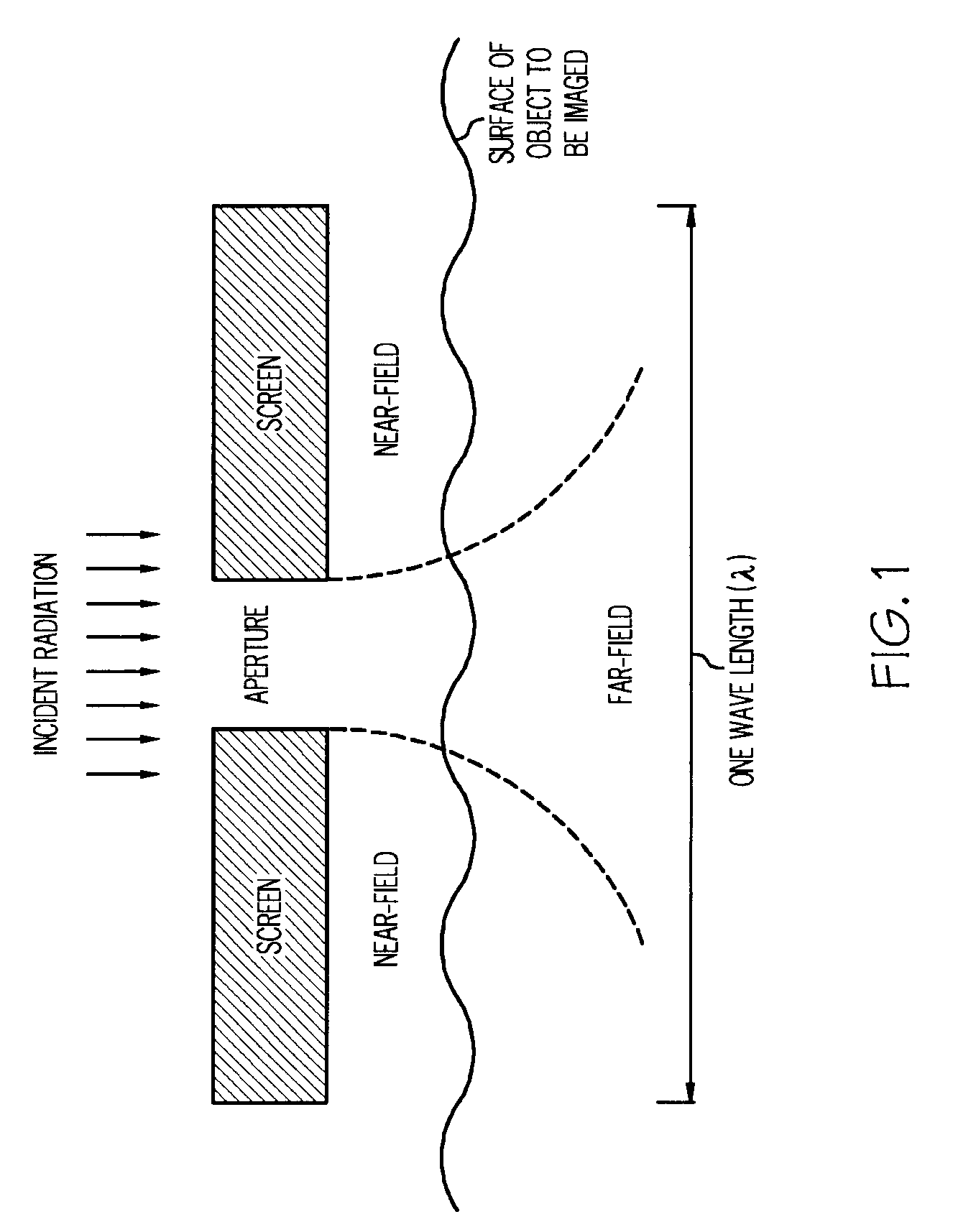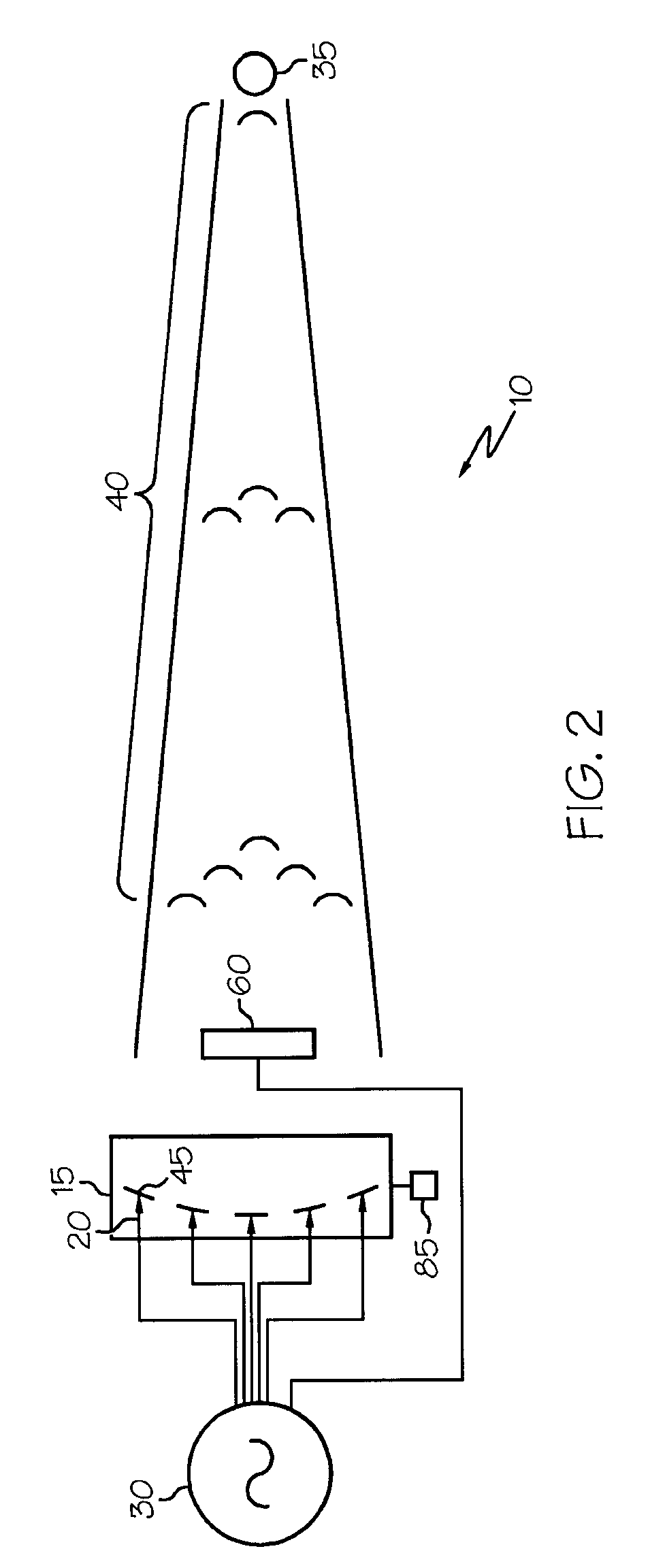Resolution radar using metamaterials
a technology of metamaterials and radars, applied in the field of antenna systems, can solve the problems of reducing the resolution of the above-mentioned limit, unable to use the “near-field” component of the radiated field, and not enhancing the near-field component of the wave, so as to achieve the effect of improving resolution and resolution
- Summary
- Abstract
- Description
- Claims
- Application Information
AI Technical Summary
Benefits of technology
Problems solved by technology
Method used
Image
Examples
Embodiment Construction
is hereafter described with specific reference being made to the drawings.
[0043]FIG. 1 is a schematic representation of the near-field diffraction from a subwavelength aperture.
[0044]FIG. 2 is a block diagram of an embodiment of the present invention depicting sub-wavelength illumination using a metamaterial transmit array.
[0045]FIG. 3 is a block diagram of an embodiment of the present invention depicting sub-wavelength illumination and detection using metamaterial transmit and receive arrays.
[0046]FIG. 4 is a block diagram of an embodiment of the present invention using amplitude discrimination circuitry.
[0047]FIG. 5 is a block diagram of an embodiment of control, conditioning, and processing circuitry of the present invention.
[0048]FIG. 6 is a graphical representations of a transmit array focal point and a receive array focal point partially overlapping.
DETAILED DESCRIPTION
[0049]While this invention may be embodied in many different forms, there are described in detail herein spec...
PUM
 Login to View More
Login to View More Abstract
Description
Claims
Application Information
 Login to View More
Login to View More - R&D
- Intellectual Property
- Life Sciences
- Materials
- Tech Scout
- Unparalleled Data Quality
- Higher Quality Content
- 60% Fewer Hallucinations
Browse by: Latest US Patents, China's latest patents, Technical Efficacy Thesaurus, Application Domain, Technology Topic, Popular Technical Reports.
© 2025 PatSnap. All rights reserved.Legal|Privacy policy|Modern Slavery Act Transparency Statement|Sitemap|About US| Contact US: help@patsnap.com



